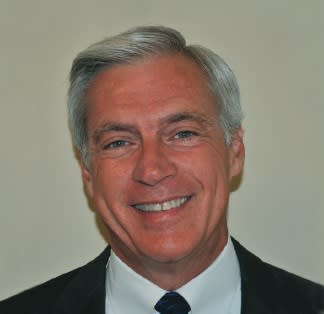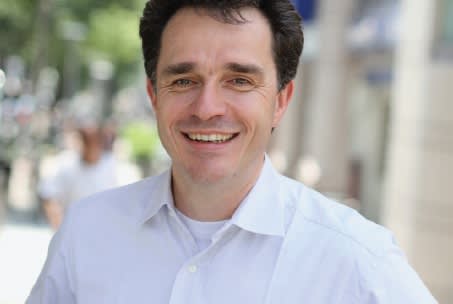Sharing 3D Designs: Compatibility is the “Word”
In last year’s roundtable, one of our executives predicted that one day, sharing 3D designs would be as easy as sharing Microsoft Word documents today. Ease of use has been a thorn in the sides of software vendors for years, but changes to the user experience are on the horizon, according to this year’s panel.

“While everyone has access to, and knows how to use, Microsoft Word, the same isn’t true – and shouldn’t have to be true – about CAD and PLM. It’s our job, as solution providers, to deliver the right tools for the right people to do their jobs, without underserving or overserving any of them.“
- Mike Campbell, PTC
“The analogy to Word is more about compatibility than ease of use,” said Paul Sicking, Chief Technology Officer at Siemens PLM Software. “Word documents can be easily shared because Word is one program developed by one company. Even if Word were very difficult to use, it would still be very easy to share documents. The reality of the CAD world is that there is no single CAD program that dominates the market the way Word dominates its market,” he added.
“Software that is easy to use is critical to the success of the design and engineering industry,” said Bertrand Sicot, Chief Executive Officer of Dassault Systèmes SolidWorks Corp. “The question remains: When will this happen?”
According to Grant Rochelle, Senior Director of Industry Marketing for Autodesk Manufacturing, it will happen in the very near future. “We envision a time when 3D design ideas and all supporting product development information will be shared across entire companies, not just among engineers, with a modern generation of easy to use, deploy, and configure CAD and PLM software.”
Chris Randles, President and CEO of SpaceClaim, stated that “traditionally, there have been three barriers to pervasive 3D solid modeling: cumbersome user interfaces, the complexity of feature-based modeling, and the perceived requirement to fully detail models before the engineering is done.”

“The concept of simplifying 3D design and taking it to the masses is now common among CAD and PLM vendors, resulting in software becoming increasingly easier to use and more collaborative for everyone, including the traditional designers and engineers.”
- Paul Sicking, Siemens PLM Software
Mike Campbell, Division Vice President for Creo Product Development at PTC, agrees that understanding how to use cumbersome CAD tools is still a major stumbling block. “While CAD and PLM developers have made great progress, the tools that are used for product development must continue to become easier to use. When I visit customers, I hear about so many different people who want to access and leverage the 3D designs that are created in engineering,” he said. “People in sales, marketing, procurement, and service planning all want to know more about and contribute to the products being developed, but they feel that information is ‘locked up’ in the CAD models, and only a select few – usually only in engineering – have access to that data and the tools to understand it.”
So, added Campbell, it is impractical to expect everyone in the enterprise to use the same tools for working with product design data. “While everyone has access to, and knows how to use, Microsoft Word, the same isn’t true – and shouldn’t have to be true – about CAD and PLM. It’s our job as solution providers,” he explained, “to deliver the right tools for the right people to do their job, without underserving or overserving any of them.”
Mobile CAD
Another trend that was highlighted by last year’s panel was the concept of mobile CAD applications and cloud-based design. For 2012, the trend is towards higher user expectations about mobility and increasing the adoption of cloud computing, according to Rochelle.
“We’ll continue to see surging demand for mobile applications that enable engineers, designers, and others to access product information from anywhere, anytime. There is no denying the mobility movement,” Rochelle explained, “and embracing mobility is helping us reach a larger audience than ever before.”

“We’ll continue to see surging demand for mobile applications that enable engineers, designers, and others to access product information from anywhere, anytime. There is no denying the mobility movement, and embracing mobility is helping us reach a larger audience than ever before.”
- Grant Rochelle, Autodesk
Sicking agrees that online and mobile applications are gaining traction with users, especially among those who need to consume, visualize, and interrogate the 3D product information. “We can see the barriers of device, operating system, storage space, and software tools being lowered or completely removed over the coming years,” he added. “And, we believe any security barriers created will be resolved over time.”
While some users are not specifically requesting cloud products, they do want the ability to access their data away from their desktop. Sicot explained that his customers want to be able to access data away from their offices, leverage mobile platforms, and reduce their hardware expenditure. “Customers understand the benefits of moving online, but are waiting to see what everyone delivers. While security has always been a concern when it comes to releasing control of their IP, our customers trust that we’ll deliver a solution with security in mind.”
Campbell agrees that while customers are not demanding mobile applications for CAD authoring, per se, they want the capability to participate in various processes such as reviewing a change request or approving a stage in the new product introduction process. “Customers have expressed more interest in the virtualization of CAD software, allowing it to be installed and run on centralized machines, and simply accessed from lightweight desktop clients. They do indicate that data security is a driver behind this strategy for virtualization.”
The User Experience
Improving productivity seems to be the mantra for design engineers who may be faced with taking on more varied duties in a down economy. That means they often have to learn new, additional skills, somewhat skewing the traditional definition of the “typical” CAD user.

“Manufacturers should worry less about the effects of proposed legislation, and instead focus on making products and processes more inherently sustainable. Companies have a real opportunity to re-evaluate their design and manufacturing processes now.”
- Bertrand Sicot, Dassault Systèmes SolidWorks
“It’s true that economic pressure has often required ‘typical’ CAD users to take on tasks that others may have performed traditionally, which typically produces mixed results,” according to Randles. “What we see, however, are other engineers such as simulation experts and manufacturing specialists removing the CAD bottleneck from their process. There’s a much greater opportunity for improvement when you can reduce an iteration cycle from a week to a few hours, than improving a CAD user’s productivity by 10%.”
The profile of the CAD user’s profession also continues to change, according to Sicot. “The percentage of ‘typical’ CAD users is decreasing. The role of the CAD user is following a similar path as draftsmen whose jobs continued to expand until they became CAD users,” he said. “The trends in engineering are changing to involve more disciplines and processes. Simulation, for example, was only understood by dedicated analysts ten years ago, and is now a mainstream skill for most engineers.”
Rochelle agrees that the definition of what it means to be an engineer or designer is unquestionably changing and becoming broader. “It’s not just about developing innovative new product designs. It’s about being able to predict the performance of that product up front in the design process using simulation techniques. It’s about better integration of mechanical and systems engineering – what some people call mechatronics.”
And, said Rochelle, it’s also about creating compelling visualizations to win business from the competition, gain funding, or create compelling point-of-sale materials – all of which involve users from all areas of the enterprise. Campbell added that in order to improve efficiency in a global environment, more and more people need to use and access data.

“Economic pressure has often required ‘typical’ CAD users to take on tasks that others may have traditionally performed, which typically produces mixed results. Other engineers, such as simulation experts and manufacturing specialists, are removing the CAD bottleneck from their process.”
-Chris Randles, SpaceClaim
“There are more people than ever working with 3D data. This means that our traditional definition of a ‘typical’ CAD user – a designer or engineer who spends the majority of their time working with CAD – is no longer valid,” Campbell stated. “That said, there are many things that everyone who interacts with CAD data expect from the software. It must be approachable, easy to use and learn, and must provide the capabilities they need to get their job done.”
These factors all affect the user experience – everything that affects how a person feels about using a product, including the perception of ease of use, scalability, and performance of that product, explained Sicking. “The concept of simplifying 3D design and taking it to the masses is now common among CAD and PLM vendors, resulting in software becoming increasingly easier to use and more collaborative for everyone, including the traditional designers and engineers. The environment to create an effective user experience must be compatible with innovative devices and appealing to the new generation of users.”
That new generation of users is looking not only at how their design tools can help them enjoy the best user experience, but also how they can be used to make better decisions in terms of issues such as sustainability. According to Sicot, sustainability is becoming a way of life around the world, especially in developing nations where population density is causing people to work at lowering energy consumption. He sees sustainability as a trend for 2012, and believes that “manufacturers should worry less about the effects of proposed legislation, and instead focus on making products and processes more inherently sustainable. Companies have a real opportunity to re-evaluate their design and manufacturing processes now.”
Find out more of what our executives had to say at www.techbriefs.com/CADupdate.

